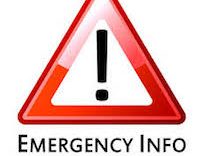KidCheck: Back to School Safety Fundamentals

It’s that time a year again – Back to School!
Back to School, is the perfect time to evaluate existing safety policies and guidelines. It’s helpful to know what worked and didn’t, and what needs improvement for the coming year regarding children’s safety.
As leaders in child protection, we provide a full-featured, easy to use, secure children’s check-in solution to organizations caring for children. However, check-in is just one aspect of the overall safety plan. We’ve shared information on the importance of operating with a child protection policy, abuse prevention tips, comprehensive screening, and allergy management. To continue with that safety focus, here are five fundamentals to increase security and take a holistic approach to improve child safety.
Top Safety Fundamentals
- Is child protection a prioritized tenet in your organization? If so, make sure to have updated policies and guidelines in place, communicate them often to staff, volunteers, and leadership. If not, it’s time to reconsider priorities. Child protection and safety are top-of-mind for parents and play a big part in where they take their children.
- Evaluate the physical environment of each classroom two or three times a year. Make sure to open up isolated areas and private spaces making it more difficult for an adult to be alone or out of sight with a child. It’s in the best interest of everyone involved that a child is never alone with an adult.
- Confirm every adult that has direct access to children has gone through a comprehensive screening process. This six-part blog series covers everything from the interview to utilizing a motor vehicle report.
- Assess the check-in process currently in place for managing the children entering and exiting your facility. Staff and leadership should be aware of who is and isn’t authorized to pick up a child. Make sure the system accounts for special circumstances such as divorce, a restraining or child protection order, medical conditions, and
- Ensure a child is never alone with one adult. Build your guidelines and policies around reducing isolation and increasing accountability. An example would be establishing the “Rule of 2’s” (a minimum of two kids and two adults) always!
Evaluating these five elements of safety, and taking any needed action, identifies opportunities for improvement and demonstrates that safety and security are essential priorities for your organization.
If you’re interested in keeping up with the latest in child protection trends, safety tips/tricks, and best practices for secure children’s check-in visit the KidCheck blog or join our growing social community on Twitter, Facebook, Google+, Pinterest, and Instagram.


